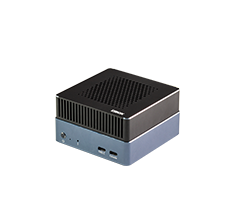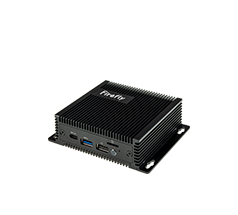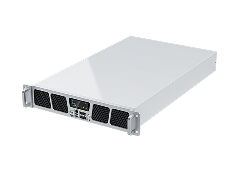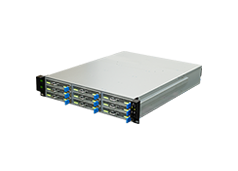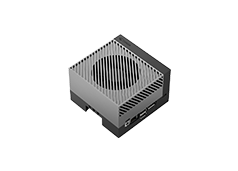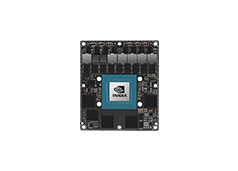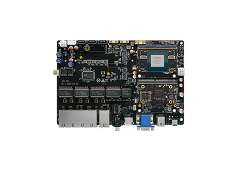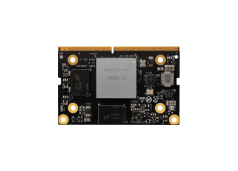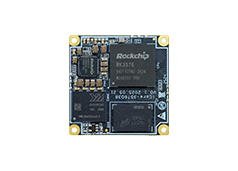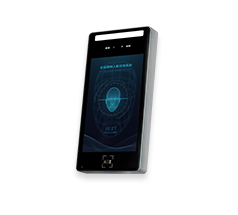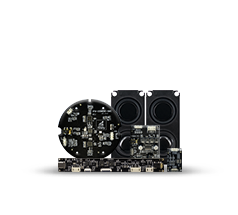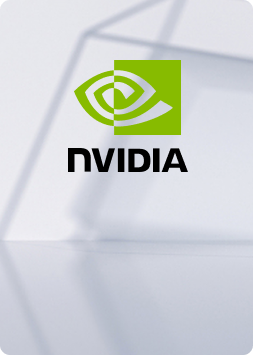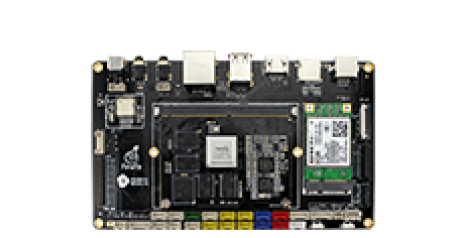MIPI CSI
Update time:2018-06-07 Views:3364
Board Resource
There are two MIPI camera interface on the AIO-3288J development board, with maximum input resolution of 14M (4416x3312) pixels. You can also connect USB cameras to the board.
This article will introduce how to make the camera work properly, using OV13850 as an example.
Relevant Code Directory
The code directories of camera are shown as followed:
Android: `- hardware/rockchip/camera |- Config | `- cam_board.xml // Parameter Configuration |- CameraHal // HAL source code `- SiliconImage // ISP library, including driver source code of all supported modules. `- isi/drv/OV13850 // Driver source code of OV13850 module. `- calib/OV13850.xml // Calibration parameter of OV13850 module. Kernel: |- kernel/drivers/media/video/rk_camsys // CamSys driver source code `- kernel/include/media/camsys_head.h
Configuration Theory
What you need to configure the camera is to make the pins and clock work properly.
According to the schematic diagram below, you need to provide: CIF_PWR、MIPI_PWR、MIPI_SDA、MIPI_SCL、MIPI_RST 和CIF_PDN0.
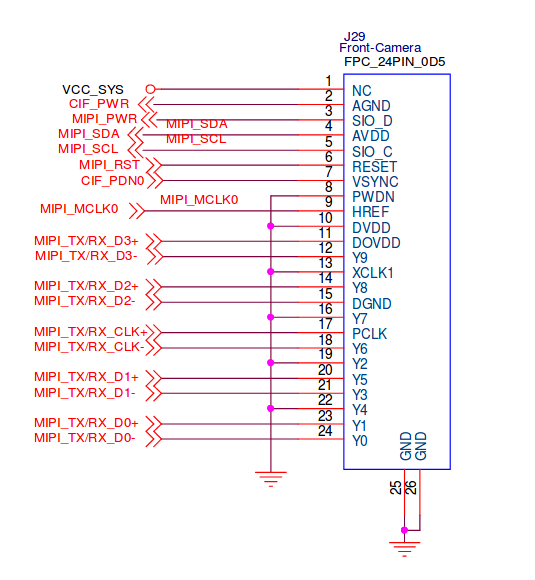
AF_VDD28 is provided by hardware connection. No configuration is needed.
DOVDD18、AVDD28
The DOVDD18 and AVDD28 are controlled by DVP_PWR:

CIF_POWER is connected to GPIO7_B4:

MIPI_PWR and MIPI_RST are connected to GPIO3_B2 and GPIO3_B0,the default state is high:

MIPI_SDA and MIPI_SCL are controlled by DVP_PWR,DVP_PWR is connected to GPIO0_B3:
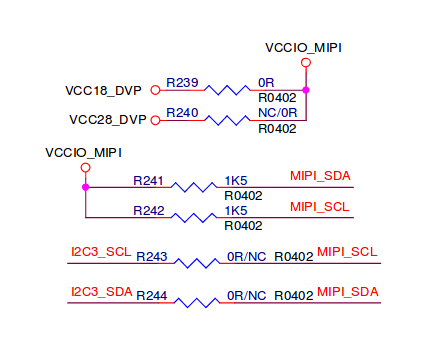


CIF_PDN0 is connected to GPIO2_B6:

All the pins are configured in cam_board.xml, with the exception of CIF_POWER and DVP_POWER which is configured in DTS and driver.
Configuration Steps
Android Layer Configuration
Edit hardware/rk29/camera/Config/cam_board.xml to configure the camera:
<?xml version="1.0" ?><BoardFile> <BoardXmlVersion version="v0.7.0"> </BoardXmlVersion> <CamDevie> <HardWareInfo> <Sensor> <SensorName name="OV13850" ></SensorName> <SensorDevID IDname="CAMSYS_DEVID_SENSOR_1B"></SensorDevID> <SensorHostDevID busnum="CAMSYS_DEVID_MARVIN" ></SensorHostDevID> <SensorI2cBusNum busnum="3"></SensorI2cBusNum> <SensorI2cAddrByte byte="2"></SensorI2cAddrByte> <SensorI2cRate rate="100000"></SensorI2cRate> <SensorMclk mclk="24000000"></SensorMclk> <SensorAvdd name="NC" min="0" max="0"></SensorAvdd> <SensorDovdd name="NC" min="18000000" max="18000000"></SensorDovdd> <SensorDvdd name="NC" min="0" max="0"></SensorDvdd> <SensorGpioPwdn ioname="RK30_PIN2_PB6" active="0"></SensorGpioPwdn> <SensorGpioRst ioname="RK30_PIN3_PB0" active="0"></SensorGpioRst> <SensorGpioPwen ioname="RK30_PIN0_PB3" active="1"></SensorGpioPwen> <SensorFacing facing="front"></SensorFacing> <SensorInterface interface="MIPI"></SensorInterface> <SensorMirrorFlip mirror="0"></SensorMirrorFlip> <SensorOrientation orientation="0"></SensorOrientation> <SensorPowerupSequence seq="1234"></SensorPowerupSequence> <SensorFovParemeter h="60.0" v="60.0"></SensorFovParemeter> <SensorAWB_Frame_Skip fps="15"></SensorAWB_Frame_Skip> <SensorPhy phyMode="CamSys_Phy_Mipi" lane="2" phyIndex="1" sensorFmt="CamSys_Fmt_Raw_10b"></SensorPhy> </Sensor> <VCM> <VCMDrvName name="BuiltInSensor"></VCMDrvName> <VCMName name="NC"></VCMName> <VCMI2cBusNum busnum="3"></VCMI2cBusNum> <VCMI2cAddrByte byte="0"></VCMI2cAddrByte> <VCMI2cRate rate="0"></VCMI2cRate> <VCMVdd name="NC" min="0" max="0"></VCMVdd> <VCMGpioPwdn ioname="NC" active="0"></VCMGpioPwdn> <VCMGpioPower ioname="NC" active="0"></VCMGpioPower> <VCMCurrent start="20" rated="80" vcmmax="100" stepmode="13" drivermax="100"></VCMCurrent> </VCM> <Flash> <FlashName name="Internal"></FlashName> <FlashI2cBusNum busnum="0"></FlashI2cBusNum> <FlashI2cAddrByte byte="0"></FlashI2cAddrByte> <FlashI2cRate rate="0"></FlashI2cRate> <FlashTrigger ioname="NC" active="0"></FlashTrigger> <FlashEn ioname="NC" active="0"></FlashEn> <FlashModeType mode="1"></FlashModeType> <FlashLuminance luminance="0"></FlashLuminance> <FlashColorTemp colortemp="0"></FlashColorTemp> </Flash> </HardWareInfo> <SoftWareInfo> <AWB> <AWB_Auto support="1"></AWB_Auto> <AWB_Incandescent support="1"></AWB_Incandescent> <AWB_Fluorescent support="1"></AWB_Fluorescent> <AWB_Warm_Fluorescent support="1"></AWB_Warm_Fluorescent> <AWB_Daylight support="1"></AWB_Daylight> <AWB_Cloudy_Daylight support="1"></AWB_Cloudy_Daylight> <AWB_Twilight support="1"></AWB_Twilight> <AWB_Shade support="1"></AWB_Shade> </AWB> <Sence> <Sence_Mode_Auto support="1"></Sence_Mode_Auto> <Sence_Mode_Action support="1"></Sence_Mode_Action> <Sence_Mode_Portrait support="1"></Sence_Mode_Portrait> <Sence_Mode_Landscape support="1"></Sence_Mode_Landscape> <Sence_Mode_Night support="1"></Sence_Mode_Night> <Sence_Mode_Night_Portrait support="1"></Sence_Mode_Night_Portrait> <Sence_Mode_Theatre support="1"></Sence_Mode_Theatre> <Sence_Mode_Beach support="1"></Sence_Mode_Beach> <Sence_Mode_Snow support="1"></Sence_Mode_Snow> <Sence_Mode_Sunset support="1"></Sence_Mode_Sunset> <Sence_Mode_Steayphoto support="1"></Sence_Mode_Steayphoto> <Sence_Mode_Pireworks support="1"></Sence_Mode_Pireworks> <Sence_Mode_Sports support="1"></Sence_Mode_Sports> <Sence_Mode_Party support="1"></Sence_Mode_Party> <Sence_Mode_Candlelight support="1"></Sence_Mode_Candlelight> <Sence_Mode_Barcode support="1"></Sence_Mode_Barcode> <Sence_Mode_HDR support="1"></Sence_Mode_HDR> </Sence> <Effect> <Effect_None support="1"></Effect_None> <Effect_Mono support="1"></Effect_Mono> <Effect_Solarize support="1"></Effect_Solarize> <Effect_Negative support="1"></Effect_Negative> <Effect_Sepia support="1"></Effect_Sepia> <Effect_Posterize support="1"></Effect_Posterize> <Effect_Whiteboard support="1"></Effect_Whiteboard> <Effect_Blackboard support="1"></Effect_Blackboard> <Effect_Aqua support="1"></Effect_Aqua> </Effect> <FocusMode> <Focus_Mode_Auto support="1"></Focus_Mode_Auto> <Focus_Mode_Infinity support="1"></Focus_Mode_Infinity> <Focus_Mode_Marco support="1"></Focus_Mode_Marco> <Focus_Mode_Fixed support="1"></Focus_Mode_Fixed> <Focus_Mode_Edof support="1"></Focus_Mode_Edof> <Focus_Mode_Continuous_Video support="0"></Focus_Mode_Continuous_Video> <Focus_Mode_Continuous_Picture support="1"></Focus_Mode_Continuous_Picture> </FocusMode> <FlashMode> <Flash_Mode_Off support="1"></Flash_Mode_Off> <Flash_Mode_On support="1"></Flash_Mode_On> <Flash_Mode_Torch support="1"></Flash_Mode_Torch> <Flash_Mode_Auto support="1"></Flash_Mode_Auto> <Flash_Mode_Red_Eye support="1"></Flash_Mode_Red_Eye> </FlashMode> <AntiBanding> <Anti_Banding_Auto support="1"></Anti_Banding_Auto> <Anti_Banding_50HZ support="1"></Anti_Banding_50HZ> <Anti_Banding_60HZ support="1"></Anti_Banding_60HZ> <Anti_Banding_Off support="1"></Anti_Banding_Off> </AntiBanding> <HDR support="1"></HDR> <ZSL support="1"></ZSL> <DigitalZoom support="1"></DigitalZoom> <Continue_SnapShot support="1"></Continue_SnapShot> <PreviewSize width="800" height="600"></PreviewSize> <DV> <DV_QCIF name="qcif" width="176" height="144" fps="10" support="1"></DV_QCIF> <DV_QVGA name="qvga" width="320" height="240" fps="10" support="1"></DV_QVGA> <DV_CIF name="cif" width="352" height="288" fps="10" support="1"></DV_CIF> <DV_VGA name="480p" width="640" height="480" fps="10" support="0"></DV_VGA> <DV_480P name="480p" width="720" height="480" fps="10" support="0"></DV_480P> <DV_720P name="720p" width="1280" height="720" fps="10" support="1"></DV_720P> <DV_1080P name="1080p" width="1920" height="1080" fps="10" support="1"></DV_1080P> </DV> </SoftWareInfo> </CamDevie> </BoardFile>
You can modify these contents:
Sensor Name
<SensorName name="OV13850" ></SensorName>
This name must match the name of the sensor driver, which has the following format:
libisp_isi_drv_OV13850.so
This driver file will be created in directory " out/target/product/rk3288/system/lib/hw/" after an Android build.
Sensor Software ID
<SensorDevID IDname="CAMSYS_DEVID_SENSOR_1A"></SensorDevID>
The ID must be unique among the camera drivers.You can fill with the following values:
CAMSYS_DEVID_SENSOR_1A CAMSYS_DEVID_SENSOR_1B CAMSYS_DEVID_SENSOR_2
Collector Name
<SensorHostDevID busnum="CAMSYS_DEVID_MARVIN" ></SensorHostDevID>
Currently only support:
CAMSYS_DEVID_MARVIN
I2C channel number
<SensorI2cBusNum busnum="3"></SensorI2cBusNum>
You can get the number via schematic or datasheet of RK3288.
Length of Register Address (in bytes)
<SensorI2cAddrByte byte="2"></SensorI2cAddrByte>
Clock of I2C (in Hz)
<SensorI2cRate rate="100000"></SensorI2cRate>
MCLK of Camera (in Hz)
<SensorMclk mclk="24000000"></SensorMclk>
PMU LDO Name Connected to AVDD. Set to NC if not connected.
<SensorAvdd name="NC" min="0" max="0"></SensorAvdd>
PMU LDO Name Connected to DOVDD
<SensorDovdd name="NC" min="18000000" max="18000000"></SensorDovdd>
Set to NC if not connected to PMU. Value of min and max must be specified, which determinte the voltage of the IO pins.
PMU LDO Name Connected to DVDD
<SensorDvdd name="NC" min="0" max="0"></SensorDvdd>
Set to NC if not connected to PMU.
PowerDown Pin
<SensorGpioPwdn ioname="RK30_PIN2_PB6" active="0"></SensorGpioPwdn>
Fill in the GPIO's name and active level.
Reset Pin
<SensorGpioRst ioname="RK30_PIN3_PB0" active="0"></SensorGpioRst>
Fill in the GPIO's name and active level.
Power Pin
<SensorGpioPwen ioname="RK30_PIN0_PB3" active="1"></SensorGpioPwen>
Fill in the GPIO's name and active level.
Facing Value
<SensorFacing facing="front"></SensorFacing>
Set the value as "front" or "back".
Camera Interface Type
<SensorInterface mode="MIPI"></SensorInterface>
It can be the following values:
CCIR601 CCIR656 MIPI SMIA
Mirror
<SensorMirrorFlip mirror="0"></SensorMirrorFlip>
It can be supported recently.
Orientation
<SensorOrientation orientation="0"></SensorOrientation>
Physical interface settings
MIPI
<SensorPhy phyMode="CamSys_Phy_Mipi" lane="2" phyIndex="1" sensorFmt="CamSys_Fmt_Raw_10b"></SensorPhy>
Configure kernel
Mentioned in the configuration principle, GPIO7_B4 need to be configured in the DTS and driver.The configuration method is as follows:
(1). Add GPIO7_B4 configuration properties in DTS
Add the gpios-cifpower attribute to the kernel/arch/arm/boot/dts/rk3288.dtsi file as follows:
isp: isp@ff910000{
compatible = "firefly,isp";
...
gpios-cifpower = ;
...
status = "okay";
};
(2). Configure CIF_POWER in driver
Read
gpios-cifpower in kernel / drivers / media / video / rk_camsys /
camsys_drv.c and set this pin to enable CIF_POWER and add the following
to the probe function camsys_platform_probe ():
enum of_gpio_flags flags;
int cifpower_io;
int io_ret;
cifpower_io = of_get_named_gpio_flags(dev->of_node, "gpios-cifpower", 0, &flags);
camsys_trace(1, "1-gpios-cifpower: gpio=%d", cifpower_io);
if(gpio_is_valid(cifpower_io)){
cifpower_io = of_get_named_gpio_flags(dev->of_node, "gpios-cifpower", 0, &flags);
camsys_trace(1, "gpios-cifpower: gpio_request");
io_ret = gpio_request(cifpower_io,"cifpower");
camsys_trace(1, "1-gpios-cifpower: gpio_request=%d", io_ret);
if(io_ret < 0){
camsys_err("Request %s(%d) failed","cifpower", cifpower_io);
}
else{
gpio_direction_output(cifpower_io, 1);
gpio_set_value(cifpower_io, 1);
camsys_trace(1, "gpios-cifpower: %d high", cifpower_io);
}
}



